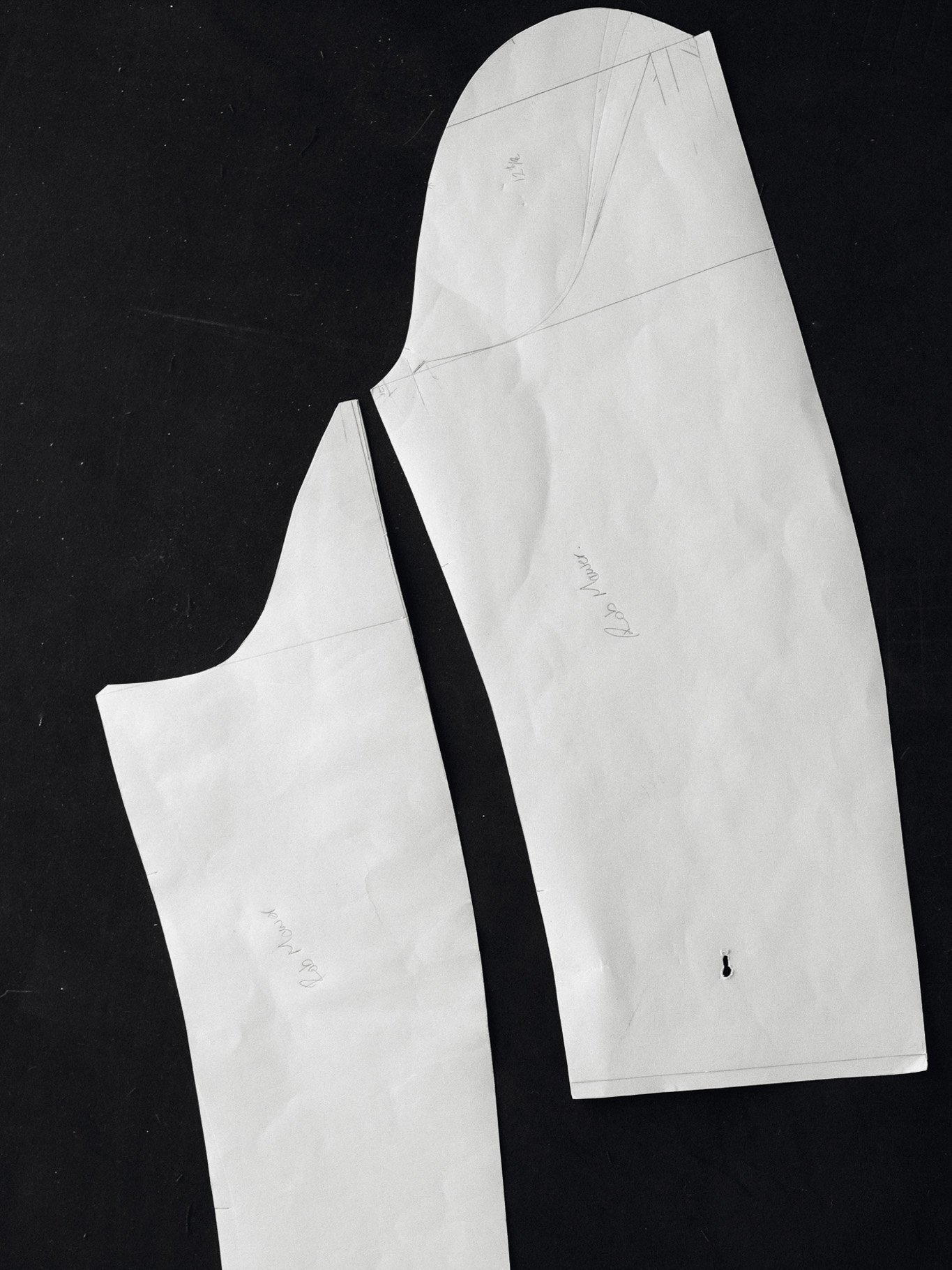The Bespoke Suit, Piece by Piece
Photography by Alex Natt
In bespoke tailoring, we’ve got some unusual names for our pattern pieces; names that often surprise clients who are stepping into this world for the first time.
Let’s start with the coat. There are five key pattern pieces we use to build a bespoke jacket: the forepart, side body, back, top sleeve, and under sleeve.
Photography by Alex Natt
Now, what you might instinctively call the “front” of the jacket is actually the forepart. That name comes from Old English: fore meaning front, and part being just that: a part of the garment. Put together, you’ve got forepart: the main front panel of the coat.
The side body is a more modern pattern piece. In older cutting systems, the forepart used to wrap right around to the side. But as cutting evolved and the desire for a more sculpted, elegant silhouette took hold, the side body was introduced. It’s a secondary panel that sits between the forepart and the back, allowing us to build shape into the coat with subtle seams instead of relying on darts. It’s a really clever bit of cutting, and one of the reasons bespoke tailoring fits the way it does.
Then we have the back, which is fairly self-explanatory, and the sleeves, which are made of two parts: a top sleeve and an under sleeve. Unlike the single-piece sleeves you’ll find on shirts or dresses, this two-piece construction allows us to curve the sleeve neatly around the elbow. It adds both comfort and a beautiful natural drape, which is integral to proper tailoring.
Photography by Alex Natt
On trousers, things get even more specific. We never refer to the legs as the “front” and “back.” Instead, it’s the topside and underside. And I’ll be honest, if you accidentally call them “front and back” in the world of bespoke, you’ll get corrected very quickly. I learned that the hard way during my apprenticeship at Huntsman.
Photography by Alex Natt
The topside is what you see when you look at the front of the trousers, while the underside wraps around from the back to join it.
Finally, with the waistcoat, it’s simpler: just a forepart and a back, though again, we use forepart rather than “front” to remain consistent with the heritage terminology across the suit.
Photography by Alex Natt
So there you have it. That’s how we name the key pattern pieces of a bespoke three-piece suit. It might sound like tailoring speak, but every term exists for a reason. Language in bespoke is like everything else: intentional, steeped in history, and just a little particular. And honestly, that’s part of the charm.





